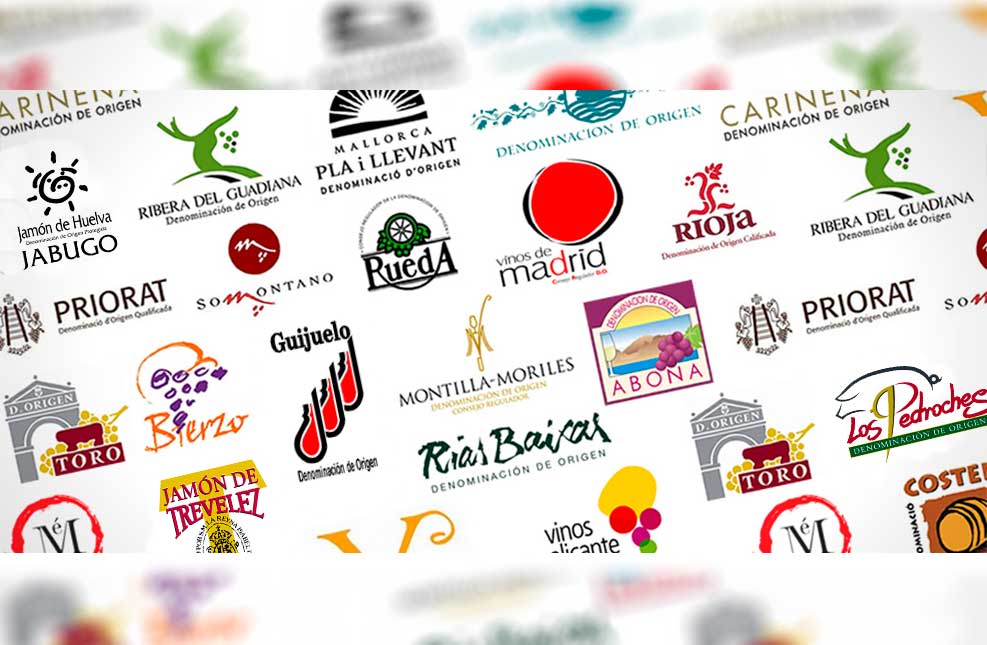
Denomination of Origin
What is a DO? To make a good ham, in addition to time and salt, you need a good pig.
Also, a good breeding in which many circumstances come into play, from the quality of the animal’s diet to the style of the chef or master ham maker.
Just as in the world of cooking there are different styles and small details that make the difference between one chef and another, in the world of ham the same thing happens, because each area of Spain has a way of making and curing specific ham. These areas are known as “denomination of origin” or by their initials as DO.
What is a Denomination of Origin?
The Denomination of Origin is an indication of origin that is applied to certain food products to protect their areas and production methods.
For a product to have a Denomination of Origin, its quality level and main characteristics must be the result of the geographical environment in which it is produced and/or packaged. This distinction protects them from falsifications or imitations, for they are not produce in certain geographical areas, can never have the same characteristics.
This is a legal protection that covers certain products (such as wine and ham) as long as they comply with certain regulations and requirements defined under that name. The main objective is to avoid, at all costs, the creation of imitations of lower quality of an exceptional product in order to make mass productions. The DOs protect the product and the consumer.
In Spain there is a specific public body in charge of ensuring compliance with these regulations and in some cases they are also covered by European regulations. As far as ham is concerned, the Denomination of Origin appeared thanks to the commitment of the most renowned production areas, which has allowed them to establish a series of specific characteristics that differentiate their hams from the rest.
Which are the DO of Ham in Spain?
In Spain we have 6 denominations of origin for ham, two that protect the production of serrano ham and 4 for Iberian ham.
Denomination of Origin of Gran Reserva Ham
- DO Teruel Ham:
Hams with this certificate come from pigs raised exclusively in the province of Teruel. Its curing process is a minimum of 14 months, with a weight that can never be less than 7 kilos.
- IGP Jamón de Trévelez:
Its production area is in the province of Granada, in some towns of Sierra Nevada. Among the best known are Juviles, Busquistar, Bérchules, Pórtugos, La Taha, Capileira, Bubión and the best known, Trevélez, which gives its name to the PGI.
Denomination of Origin of the Iberian Ham
- DO Huelva Ham:
It was created in 1976 and protects the production of ham from pigs reared in pastures in 31 production areas: Alajar, Almonaster la Real, Aracena, Aroche, Arroyomolinos de León, Cala, Campofrío, Cañaveral de León, Castaño del Robledo, Corteconcepción, Cortegana, Cortelazor, Cumbres de En medio, Cumbres de San Bartolomé, Cumbres Mayores, Encinasola, Fuenteheridos, Galaroza, La Granada de Río Tinto, Higuera de la Sierra, Hinojales, Huelva, Linares de la Sierra, Los Marines, La Nava, Puerto Moral, Rosal de la Frontera, Santa Ana la Real, Santa Olalla del Cala, Valdelarco and Zufre. - DO Jamón de Guijuelo:
It was created in 1984 and in addition to the town of Guijuelo itself, the regulations include other municipalities such as Ledrada, Miranda del Castañar, Vejar, Sotoserrano, Frades de la Sierra and Tamames. - DO Dehesa de Extremadura:
It was created in 1990 and this DO only covers hams from pigs reared in Extremadura, i.e. it does not accept animals from other origins. The production of these hams is carried out in industries located in the regions of Sierra de San Pedro, Sierra de Montanchez, Cáceres-Gredos Sur, Ibor-Villuercas and Sierras del Suroeste de Badajoz. - DO Los Pedroches
It is the youngest of the DO of ham in Spain, created in 2006. Los Pedroches is a valley located north of Cordoba and the regulation includes a total of 32 municipalities in which are Alcaracejos, Añora, Benalcázar, Bélmez, Los Blázquez, Cardeña, Conquista, Dos Torres, Espiel, Fuente La Lancha, Fuente Ovejuna, La Granjuela, El Guijo, Hinojosa del Duque, Pedroche, Peñarroya-Pueblo Nuevo, Pozoblanco, Santa Eufemia, Torrecampo, Valsequillo, Villanueva de Córdoba, Villanueva del Duque, Villanueva del Rey, Villaralto and El Viso.





